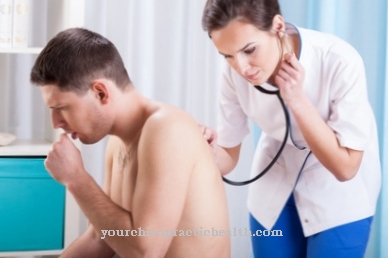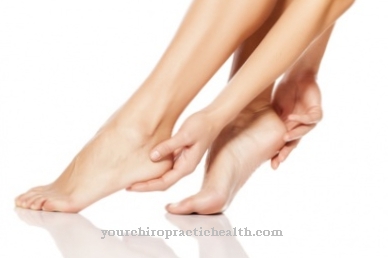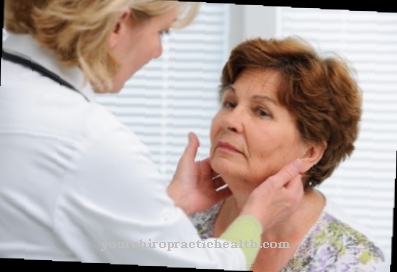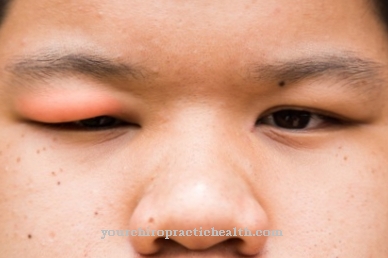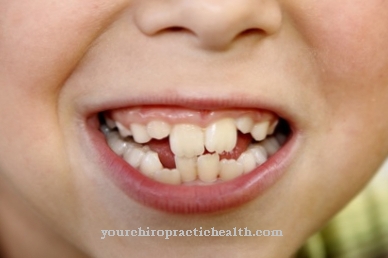The Stinging in the head refers to one of around 250 different types of headache known to us. The complaints appear in the form of symptoms, but can also appear as an independent disease. Sometimes the pain is so bad that it is almost unbearable.
What is stinging in the head?

However, the stinging in the head shows up in different ways. The symptoms represent a concentrated pain in the head area. This pain can occur immediately and disappear again after a short time. Permanent pain is also possible.
Sometimes it is difficult to tell the stinging pain from other pain. Often the stinging in the head occurs along with other ailments. However, diseases also occur that are only noticeable as headaches. This stinging can be so severe that the everyday life of those affected is significantly impaired.
causes
There are many causes of the stinging in the head. To date, the exact mechanism for the occurrence of these complaints is unknown. There are also different forms of this pain, which are divided into primary and secondary types.
The former appear as independent diseases, the latter are symptoms for a wide variety of basic diseases. The pain mainly affects the nerves, meninges and blood vessels. Primary pain includes stabbing pain, migraines, cluster headaches, paroxysmal hemicrania, and trigeminal neuralgia. The stinging in the head is noticeably quite common in those affected with cluster headache.
In the worst case, migraines can also last for several days. This manifests itself in a unilateral stabbing and / or pulsating pain, which can be accompanied by nausea and vomiting. In the so-called cluster headache, the pain occurs only at intervals. The patient is symptom-free between these intervals. The so-called trigeminal neuralgia is characterized by very strong and stabbing pain, which, however, only occurs for a short time.
Paroxysmal hemicrania is characterized by seizure-like and sharp headaches. Up to 40 pain attacks can occur in just one day. Secondary headaches are symptoms of other diseases such as eye or dental diseases or problems with the spine. In these cases, too, a stinging of the head can occur.
You can find your medication here
➔ Medicines for headaches and migrainesDiseases with this symptom
- migraine
- Brain tumor
- Cluster headache
- Sunstroke
- Paroxysmal hemicrania
- Trigeminal neuralgia
Diagnosis & course
If there is frequent stinging in the head, those affected should definitely consult a doctor. In most cases, the causes are quite harmless, but clarifying the complaints is very useful. Last but not least, the patient's quality of life suffers considerably from the symptoms.
In order for the stabbing headache to be treated in a targeted manner, it is imperative to find out the cause of it. Usually the doctor is able to express a suspicion based on the specific symptoms. To do this, he has the exact symptoms and the course of the complaints explained to him during the patient consultation. He is also interested in any previous illnesses, especially those of a chronic nature.
The symptoms of migraines, cluster headaches and other primary pain disorders have the same characteristics. In this way, it is usually possible for the doctor to make an accurate diagnosis during the consultation with the patient. Diagnostic imaging is usually superfluous and is only used if other diseases are feared as the cause of the stinging in the head.
Complications
A stinging of the head can result in a wide variety of complications, and it is generally not possible to predict these complications universally. Stinging in the head often leads to difficulty concentrating, lack of sleep and a bad attitude towards life. The quality of life declines relatively sharply when the stinging in the head is strong and accompanies the patient over a long period of time.
If the symptom occurs over a longer period of time and does not go away on its own, a doctor must be consulted. People often experience pain after accidents or injuries that have occurred in the head region. Here, too, treatment must be carried out by a doctor.
It is not uncommon for the pain to be transferred from the head to other regions of the mind. For example, your ears or teeth can hurt if you get a sting in the head. However, pain in the ears and teeth can also cause stinging in the head and thus have a negative effect on everyday life.Treatment is usually with medication and stress reduction. In most cases, the treatment is successful, so the stinging in the head goes away.
When should you go to the doctor?
A stinging in the head can arise from a wide variety of causes, so that an appropriate doctor should be consulted. In most cases, a sting in the head conceals an infection or a cold. In addition, there can be various side effects that can be effectively combated and alleviated with suitable medication.
However, if you forego medical and drug treatment at this point, you must expect the individual clinical pictures to worsen considerably. If you have the first symptoms, you can of course use your own medicine cabinet. Cold ointments, headache tablets or even a cold tea are measures that can achieve a slight improvement. If, however, there is no significant improvement after one or two days, then it is imperative to see a family doctor. In such a case, a doctor can prescribe appropriate medication that will bring about a significant improvement within a short time.
The following applies: Anyone who suffers from a stinging in the head must see a doctor after two days at the latest. An early improvement and alleviation of the individual symptoms can only be achieved with appropriate medication. In addition, a stinging in the head can also hide a really serious underlying disease. Seeing a doctor early increases your chances of a full recovery. No matter what kind of illness it is exactly.
Doctors & therapists in your area
Treatment & Therapy
Therapy and treatments for the stinging in the head depend on the cause of the discomfort. The primary pain disorders occur as a result of irritated nerve tracts in the brain. However, their cause cannot be treated. In addition to general pain, there is also a stabbing headache at regular intervals. This applies to migraine pain as well as to cluster headaches. Of course, this also includes all other primary headaches.
These can only be treated according to their symptoms. The aim of treatment is to relieve the patient from pain. In the event of a migraine attack, pain relievers and anti-inflammatory drugs are used. These then belong to the group of non-opioid analgesics. At the same time, special migraine medication is given. These are also used for other headache disorders.
Sometimes acute treatment with medical oxygen is also performed. The pain is usually relieved very quickly. In addition to pure pain therapy with analgesics, those affected also have surgical options available, depending on the cause. However, if the stinging in the head is due to another disease, this is first treated.
Outlook & forecast
A stinging in the head doesn't necessarily need to be treated by a doctor. It often occurs only temporarily and disappears on its own. The patient can carry out the treatment with the help of pain relievers, plenty of water and bed rest. In most cases, a visit to the doctor is not necessary if the stinging in the head occurs only briefly and after stressful situations or during illness.
If the stinging occurs in the head after an accident, surgery may need to be performed. After the treatment, there are rarely complications and other complaints, most of the time the patient can go back to his normal everyday life.
If the stinging in the head is caused by a chronic illness, serious complications can occur without treatment. Therefore, a doctor should be consulted especially if the stinging occurs together with nausea, vomiting, or general malaise. In this case, no self-help is possible.
You can find your medication here
➔ Medicines for headaches and migrainesprevention
Home remedies ↵ for headaches No general advice can be given to prevent stinging in the head. In the event of a migraine, calcium channel blockers, beta blockers or anti-epileptic drugs are useful. With secondary headache, which occurs as a stinging in the head, the causes are so diverse that no specific recommendations can be made.
You can do that yourself
Severe stabbing headaches and chronic complaints should be treated by a doctor. The causes can be varied. In these cases, self-treatment on your own is not advisable. It is advisable to keep a pain diary in order to determine the right one from the approximately 200 types of headache.
If there is a known migraine disease, quiet and darkened rooms help. As a preventive measure, it is important to ensure a low-stress environment without overstimulation. Essential oils made from basil, eucalyptus, lemon, lemon balm, thyme, mint or rose are a natural treatment for stabbing pain in the head. These can be applied in a scented bowl or - dripped onto a cotton cloth - placed directly on the forehead. The oils are available as ready-made preparations in pharmacies, health food stores or health food stores. Herbs and medicinal plants can also be consumed. The simplest dosage form is a freshly brewed tea. Likewise, the consumption of parsley is said to bring rapid relief at the first signs of pain.
In the case of existing headaches, those affected often have to first try out which stimuli the body reacts to with pain reduction. Gentle walks in the fresh air or a light massage of the temples can also help. In the case of so-called tension headaches, massages initially help to resolve blockages in the neck and back area. Consultation with an osteopath is also recommended. If you use your computer for a long time in everyday work, it is important to look out into the distance and to move around in between.

